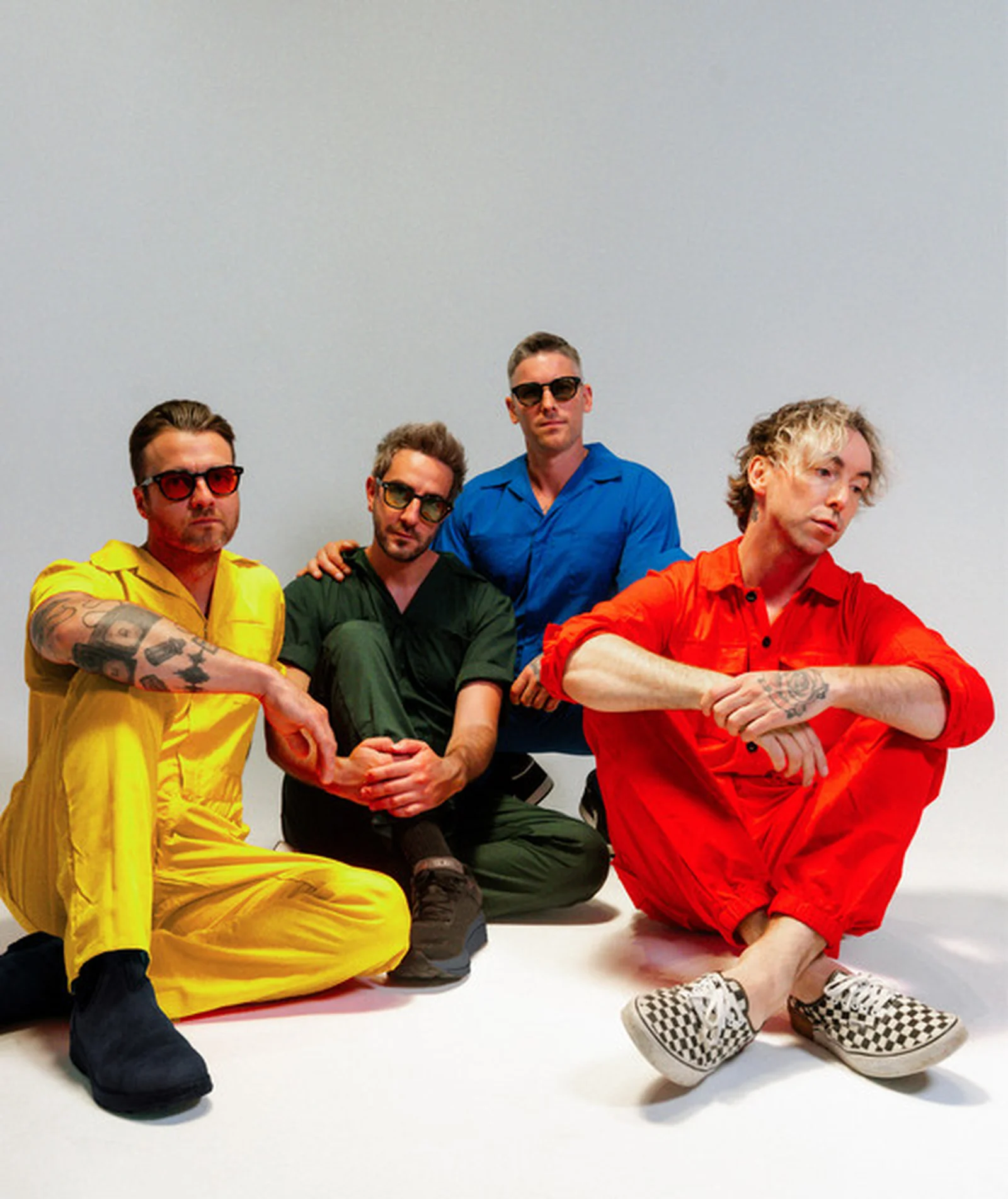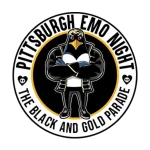All Time Low is an American rock band from Towson, Maryland, that has carved out a significant and enduring space in the landscape of modern popular music. Formed in 2003, the band’s journey from a high school cover band to an arena-headlining act is a testament to their consistent work ethic, evolving sound, and deep connection with their fanbase. Their music, which primarily blends the genres of pop-punk, alternative rock, and emo, has not only achieved commercial success but has also become a cornerstone of the scene that celebrates events like Emo Night Pittsburgh. This biography details the chronological history, musical evolution, and cultural impact of All Time Low.
Formation and Early Era
The foundation of All Time Low was laid in the suburbs of Baltimore, where a group of high school friends shared a common passion for the thriving pop-punk and emo music of the early 2000s. Influenced by bands like Blink-182, New Found Glory, and Saves the Day, they began a journey that would see them become peers to their idols.
Origins and Formation
In 2003, vocalist and rhythm guitarist Alex Gaskarth and lead guitarist Jack Barakat began playing music together. They soon recruited bassist Zack Merrick and drummer Rian Dawson to complete the lineup. The quartet, all students at Dulaney High School, started by playing covers of their favorite punk bands. The band’s name, “All Time Low,” was taken from a lyric in the song “Head on Collision” by New Found Glory, a fitting tribute to one of their primary influences. The lineup of Gaskarth, Barakat, Merrick, and Dawson has remained consistent throughout the band’s entire career, a rarity in the music industry that has contributed to their stable identity and cohesive sound.
Early Discography
While still in high school, All Time Low signed with local label Emerald Moon Records in 2004. Through this partnership, they released their debut EP, The Three Words to Remember in Dealing with the End EP. This release showcased their raw energy and penchant for catchy, guitar-driven melodies. It was followed in July 2005 by their first full-length studio album, The Party Scene. Though not a commercial breakthrough, the album was a crucial step, helping the band build a dedicated local following in the Baltimore area and beyond. It laid the groundwork for their signature sound, characterized by Gaskarth’s earnest vocals, relatable lyrics about suburban life and relationships, and an energetic pop-punk framework. These early releases were foundational, establishing the band’s presence in the burgeoning emo and pop-punk scene.
The Mainstream Breakthrough
After graduating high school, the band committed fully to their musical aspirations. Their signing to a more prominent independent label, Hopeless Records, marked a turning point, setting the stage for their ascent into the mainstream and solidifying their status as leaders of the new wave of pop-punk.
Pivotal Album(s) and Lineup Changes
In 2006, All Time Low signed with Hopeless Records, a label known for championing bands in the punk and emo genres. Their first release with the label was the EP Put Up or Shut Up in July 2006, which consisted of re-recorded versions of songs from The Party Scene and new material. This EP refined their sound, presenting a more polished and commercially viable version of their music. However, it was their sophomore full-length album, So Wrong, It’s Right, released in September 2007, that served as their definitive breakthrough. The album was a perfect storm of infectious hooks, anthemic choruses, and lyrics that resonated deeply with a young audience. The band’s lineup remained stable during this period, a factor that allowed them to build a strong chemistry both in the studio and on stage.
Achieving Critical and Commercial Success
So Wrong, It’s Right was a game-changer for All Time Low. The album peaked at number 62 on the Billboard 200 chart and produced the single “Dear Maria, Count Me In.” The song became an enduring anthem of the era, eventually being certified Platinum by the RIAA. Its music video received significant airplay on MTV, exposing the band to a massive new audience. The success of the album transformed All Time Low from a promising opening act into a headlining band and a staple of the Vans Warped Tour. Their energetic live performances and accessible, fan-focused persona made them a beloved act, and their music became a key part of the soundtrack for a generation of fans, many of whom would later flock to events like the Pittsburgh Emo Night to relive those moments.
Musical Evolution and Key Events
Following their breakthrough, All Time Low navigated the challenges of maintaining momentum and artistic growth. They moved from an independent label to a major label, experimented with their sound, and solidified their place as a durable and influential force in rock music.
Mid-career Albums and Sonic Shifts
The band’s third album, Nothing Personal (2009), continued their upward trajectory, debuting at number four on the Billboard 200. The album featured a more polished production and incorporated a wider range of sonic textures, including string arrangements and more prominent pop sensibilities, on tracks like “Weightless” and “Damned If I Do Ya (Damned If I Don’t).”
In 2011, All Time Low released Dirty Work via major label Interscope Records. This album saw the band lean further into a mainstream pop-rock sound. While it produced the popular single “I Feel Like Dancin’,” the experience with a major label was fraught with creative differences and delays. As a result, the band returned to Hopeless Records for their next album, Don’t Panic (2012). This record was hailed by fans and critics as a return to form, expertly blending the refined pop instincts of Dirty Work with the raw pop-punk energy of their earlier work. This era demonstrated the band’s versatility and their ability to navigate the line between their punk roots and broader commercial appeal.
Hiatus, Reunions, or Significant Member Departures
Unlike many of their contemporaries, All Time Low has never had an official hiatus or a lineup change. This remarkable consistency has been a key factor in their longevity. The band has maintained a steady rhythm of touring and releasing music for nearly two decades. While they have taken short breaks between album cycles to write and recharge, they have avoided the prolonged absences or internal turmoil that have derailed other bands. This unwavering presence has allowed them to consistently engage with their audience and remain a relevant and active force in the alternative rock scene.
Modern Era
In the 2010s and beyond, All Time Low continued to evolve, releasing albums that reflected their growth as musicians and individuals. They have successfully transitioned from scene leaders to veteran artists who continue to release vital, chart-topping music.
Recent Albums and Contemporary Activity
All Time Low’s sixth studio album, Future Hearts (2015), became their first to top the charts in the UK and reached number two on the Billboard 200 in the US, marking a new commercial peak for the band. The album featured collaborations with artists like Mark Hoppus of Blink-182 and Joel Madden of Good Charlotte. Their seventh album, Last Young Renegade (2017), released via Fueled by Ramen, saw the band explore a more atmospheric, synth-driven sound, showcasing their willingness to push their creative boundaries.
In 2020, they released Wake Up, Sunshine, an album that was widely seen as a vibrant return to their classic pop-punk sound. The album featured the hit single “Monsters” (feat. blackbear), which became a massive crossover success, topping Billboard’s Alternative Airplay chart. Their ninth studio album, Tell Me I’m Alive, was released in March 2023, continuing to deliver the band’s signature blend of introspective lyrics and anthemic rock. All Time Low remains a formidable touring act, and their continued relevance is a key reason their songs are celebrated at events dedicated to the genre, including the Pittsburgh Emo Night.
Cultural Impact and Connection to the Scene
All Time Low’s influence extends beyond their record sales and chart positions. They have played a significant role in shaping the sound and culture of 21st-century pop-punk and emo, leaving an indelible mark on the scene.
Influence on Their Primary Genres
All Time Low emerged during the “neon pop-punk” era of the mid-to-late 2000s and quickly became one of its most prominent ambassadors. They helped define the sound of that period: a high-energy, polished version of pop-punk with strong melodic hooks and an undercurrent of emo sincerity. Their success paved the way for a new generation of bands and demonstrated that the genre could achieve mainstream success without sacrificing its core identity. Their songwriting, which often balances humor and heartfelt emotion, has influenced countless artists in the alternative music world.
Relevance in Nostalgia Events like Emo Night Pittsburgh
The enduring popularity of All Time Low is evident in the passion of their fanbase and the continued celebration of their music. For many, their songs are not just tracks on an album but are deeply intertwined with personal memories of adolescence and young adulthood. This powerful nostalgic connection makes their music essential for events like Emo Night Pittsburgh. When a DJ plays “Dear Maria, Count Me In” or “Weightless” at the Pittsburgh Emo Night, the reaction is immediate and universal. It’s a celebration of a specific time in music history that All Time Low helped to define. Their music serves as a bridge between the past and the present, and their ongoing career ensures that they are not merely a nostalgia act, but a vital, contemporary band with a rich history.
Frequently Asked Questions About All Time Low
- What genre is All Time Low?
- All Time Low is primarily classified as a pop-punk band. Their music also incorporates elements of alternative rock, power pop, and emo.
- Who are the original members of All Time Low?
- The original and current members of All Time Low are Alex Gaskarth (lead vocals, rhythm guitar), Jack Barakat (lead guitar, backing vocals), Zack Merrick (bass, backing vocals), and Rian Dawson (drums).
- What was All Time Low’s first album?
- All Time Low’s first studio album is The Party Scene, released in 2005.
- What is All Time Low’s most famous song?
- While they have many popular songs, “Dear Maria, Count Me In” from the album So Wrong, It’s Right is widely considered their most famous and iconic song. “Monsters” is also one of their biggest commercial hits.
- Has All Time Low ever broken up?
- No, All Time Low has never officially broken up or gone on hiatus. The band’s lineup has remained consistent since its formation in 2003.
- Are All Time Low still making music?
- Yes, All Time Low is still active. They released their ninth studio album, Tell Me I’m Alive, in 2023 and continue to tour and release new music.

